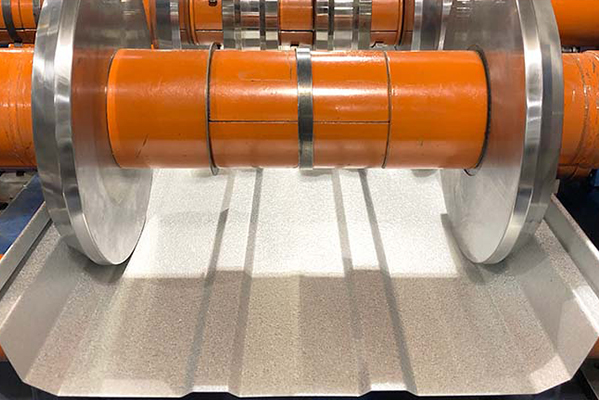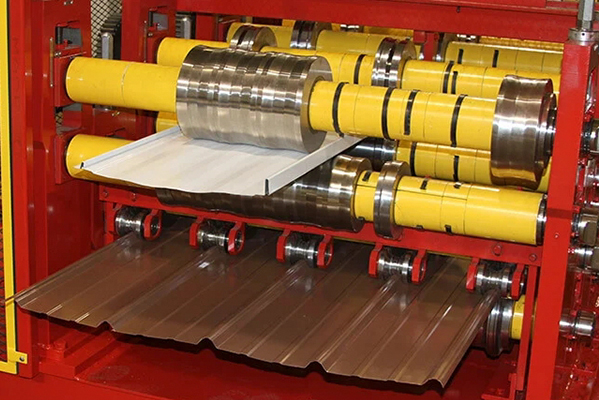Navigation Menu
Contact Us
- Email:
- info@wxavatar.com
- Address:
- Yurong Village, Yuqi Street, Huishan District, Wuxi, China.
Release Date:Mar 29, 2025 Visit:52 Source:Roll Forming Machine Factory
Panel roll forming equipment is a highly efficient and automated manufacturing system designed to produce continuous metal panels with precise cross-sectional profiles. This process is widely adopted across industries such as construction, automotive, aerospace, and appliance manufacturing due to its numerous benefits over traditional metal-forming methods. In this article, we explore the key advantages of using panel roll forming equipment and why it is a preferred choice for mass production.
1. High Production Speed & Efficiency
One of the most significant advantages of roll forming is its ability to produce long, continuous panels at high speeds.
Continuous Processing – Unlike stamping or punching, which require repeated stops and starts, roll forming operates in a continuous motion, significantly increasing output.
Reduced Cycle Time – Multiple forming stages happen simultaneously as the metal strip passes through successive rollers, minimizing production delays.
Ideal for Large Volumes – Perfect for industries requiring bulk production of uniform panels, such as roofing sheets or automotive parts.
2. Cost-Effectiveness
Roll forming offers substantial cost savings compared to alternative metal-forming techniques.
Lower Tooling Costs – Unlike stamping, which requires expensive dies for each design, roll forming uses adjustable rollers that can be modified for different profiles.
Reduced Material Waste – The process efficiently shapes metal coils with minimal scrap, optimizing material usage.
Energy Efficiency – Since roll forming is a cold-forming process, it consumes less energy than hot-forming methods like extrusion.
3. Superior Precision & Consistency
The automated nature of roll forming ensures high accuracy and uniformity across all produced panels.
Tight Tolerances – The progressive bending process allows for precise control over dimensions, ensuring every panel meets exact specifications.
Uniform Quality – Unlike manual bending or welding, roll forming eliminates human error, delivering consistent results across large production runs.
Repeatability – Once the machine is set up, it can reproduce the same profile indefinitely without deviation.

4. Material Versatility
Panel roll forming equipment can work with a wide range of metals and alloys, making it suitable for diverse applications.
Compatible Materials – Steel (including galvanized, stainless, and coated varieties), aluminum, copper, and other alloys.
Thickness Flexibility – Can process thin to moderately thick metal sheets (typically 0.1 mm to 20 mm, depending on machine capacity).
Pre-Finishing Options – Metal coils can be pre-painted, coated, or embossed before forming, reducing post-processing needs.
5. Design Flexibility & Customization
Roll forming supports complex profiles and custom designs without requiring extensive retooling.
Complex Cross-Sections – Capable of producing intricate shapes, including multi-channel panels, corrugated sheets, and ribbed structures.
Easy Adjustments – Rollers can be swapped or adjusted to create different profiles, making it ideal for custom orders.
Integrated Features – Some machines allow for punching, notching, embossing, or welding during the forming process, reducing secondary operations.
6. Strength & Structural Integrity
Roll-formed panels often exhibit superior mechanical properties compared to other fabrication methods.
Work Hardening Effect – The cold-forming process can enhance the strength of the metal by increasing its hardness.
No Heat Distortion – Unlike welding or hot forming, roll forming avoids thermal warping, preserving material integrity.
Seamless Lengths – Since panels are formed from a continuous strip, they have no weak joints or seams, improving durability.
7. Reduced Secondary Processing
Many roll forming systems integrate additional operations, streamlining production.
In-Line Punching & Cutting – Some machines include punching stations for holes or slots and precision cutters for length customization.
Pre-Assembly Features – Certain profiles can be designed for easy interlocking or fastening, reducing assembly time.
Minimal Finishing Required – Since the process maintains a smooth surface, post-forming treatments like grinding or polishing are often unnecessary.

8. Scalability & Automation
Modern roll forming equipment can be fully automated, enhancing productivity and reducing labor costs.
CNC & PLC Controls – Advanced machines use computerized controls for precise adjustments and repeatability.
Robotic Integration – Automated loading, stacking, and packaging systems can be incorporated for a seamless production line.
Adaptability for Industry 4.0 – Smart roll forming systems can integrate with IoT for real-time monitoring and predictive maintenance.
Conclusion
Panel roll forming equipment offers unmatched advantages in speed, cost efficiency, precision, and versatility, making it a cornerstone of modern metal fabrication. Whether for construction, automotive, aerospace, or industrial applications, roll forming provides a reliable and high-performance solution for producing durable, high-quality metal panels. As technology advances, the capabilities of roll forming machines continue to expand, further solidifying their role in manufacturing.